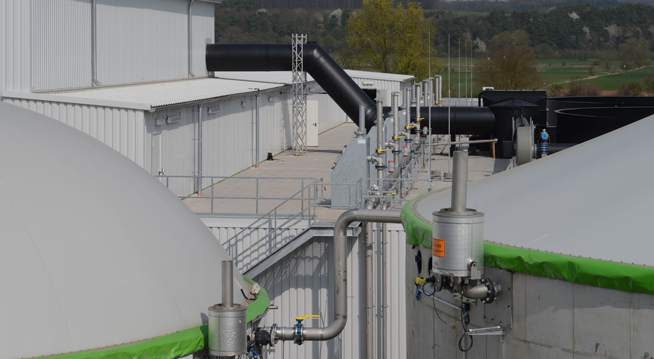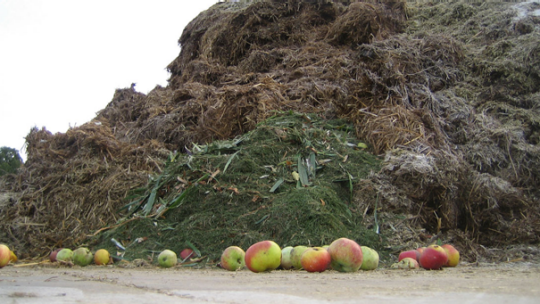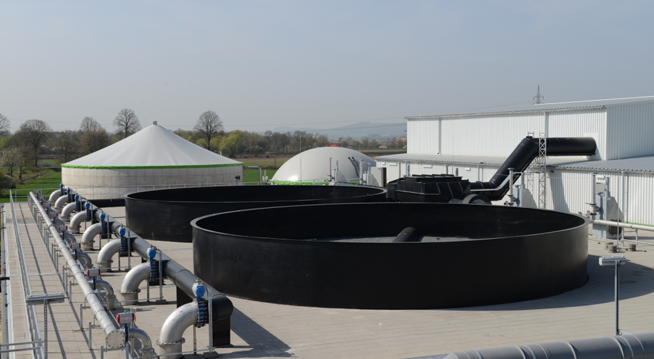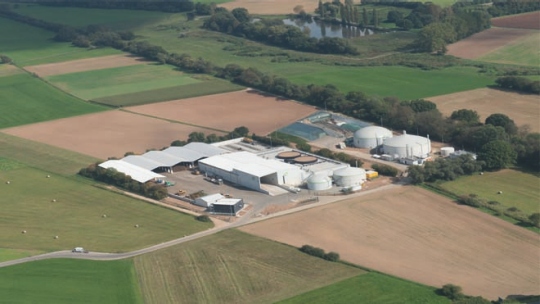Biomethane plant in Stausebach, Germany
A hybrid plant that combines wet and dry anaerobic digestion, built by Schmack Biogas; the upgrading to biomethane was carried out by Schmack Carbotech.

Stausebach biomass collection centre
Location: Kirchhain-Stausebach
Type: Hybrid plant, 4 MW (Gas)
Feeding: organic waste and dedicated crops
Organic waste: a heterogeneous, variable biomass
The biggest challenge in the management of a plant that performs the anaerobic digestion of organic waste is the substrate: the OFMSW is never the same over time; its composition can vary greatly. Waste originating from large retail spaces may have, for example, a much lower dry matter content than municipal waste, which is rich in green waste. In addition, the availability of waste may vary significantly from one season to the next.


The combination of technologies guarantees flexibility
Without a constant supply, it is difficult to get the maximum out of a plant that uses waste. The Stausebach project is the solution to the problem of variable and non-programmable available waste, with the aim of guaranteeing constant quantities of gas over time.
For this purpose, Schmack Biogas designed and built an innovative plant system, which combines two different technologies. It brings together the dry anaerobic digestion of Bioferm and the wet anaerobic digestion of Schmack Biogas to guarantee the optimal use of the biomass used.
Getting the most out of the available biomass
Thanks to the presence of both technologies, the different incoming biomass is directed to the most suitable anaerobic digestion system. Good-quality wet waste, organic waste rich in impurities and dedicated crops feed the two different sections in the most efficient manner possible. The two biogas production lines remain separate, while the gas purification plant and the fermenter heating plant are common.
The plant produces approx. 3 million Nm³ of methane per year, which are then injected in the mains owned by E.ON Mitte. This quantity corresponds to approx. 30 million kWh, which can cover the electricity requirements of 8,500 families.


